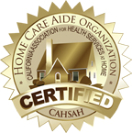Incontinence is the uncontrolled or accidental release of urine; it is a very common problem, especially among older adults (one in 10 people 65 years of age or older are estimated to experience bladder control problems). It occurs more often in women than in men. Regardless of the cause, incontinence is psychologically distressing and socially disruptive. Some older adults will not leave their home for fear that they will have an accident in public.
There are two main types of incontinence; these can occur in combination causing mixed incontinence. Stress incontinence is involuntary loss of a small amount of urine with increased abdominal pressure, such as coughing, sneezing, laughing, or jogging; it is the most common type of bladder control problem in women. It can be caused by multiple vaginal births, weight gain, or loss of muscle tone. Urge incontinence is characterized by the involuntary urine loss after a sudden urge to void. It happens when you have a sudden need to urinate (and the need to urinate often) but can’t reach the toilet in time. With this type of bladder problem, you may leak a larger amount of urine that can soak your clothes or run down your legs. Urge incontinence is caused by an overactive bladder muscle that pushes urine out of the bladder. It may be caused by irritation of the bladder, emotional stress, or brain conditions such as Parkinson’s disease or stroke.
Incontinence can be successfully treated in many cases. It is important to see your health care provider if it is a problem for you. He or she will ask about what and how much you drink; he or she will also ask you how often and how much you urinate and leak. It may help to keep track of these things for 3 or 4 days before you see your doctor. Depending on the type of incontinence you have and how much it affects your life, your treatment may include exercises, bladder training, medicines, a pessary, or a combination of these. Surgery may be an option, too.
In addition to getting medical care, you may be able to help control your incontinence with these lifestyle changes. It may help to: cut back on caffeine drinks such as coffee, tea, and soda; limit your alcohol drink to one a day; eat foods high in fiber to help avoid constipation; stay at a healthy weight; urinate regularly and often (wear clothes that you can remove easily); and avoid drinking too much liquid before going to bed, riding in a car for long periods of time, or doing anything that makes using the bathroom more difficult. Wear incontinence pads or garments to catch any leaking urine. Strengthening your pelvic muscles with Kegel exercises may lower your risk for incontinence. If you smoke, try to quit. Quitting may make you cough less, which may help with incontinence.
When treated, symptoms of incontinence can be reduced or eliminated altogether. Don’t let incontinence limit your activities outside of the home for fear of embarrassment. Continue to live and enjoy life fully!







